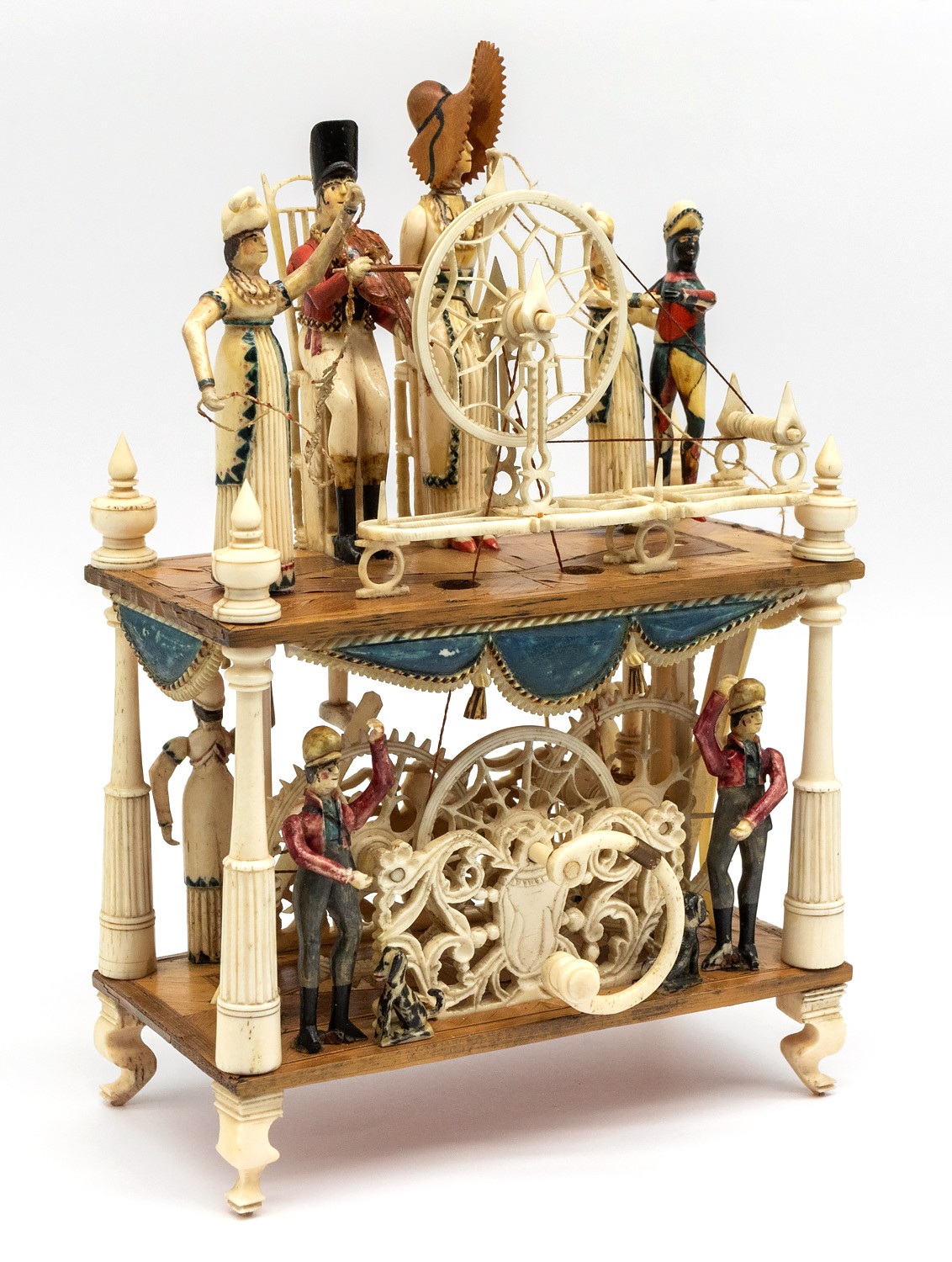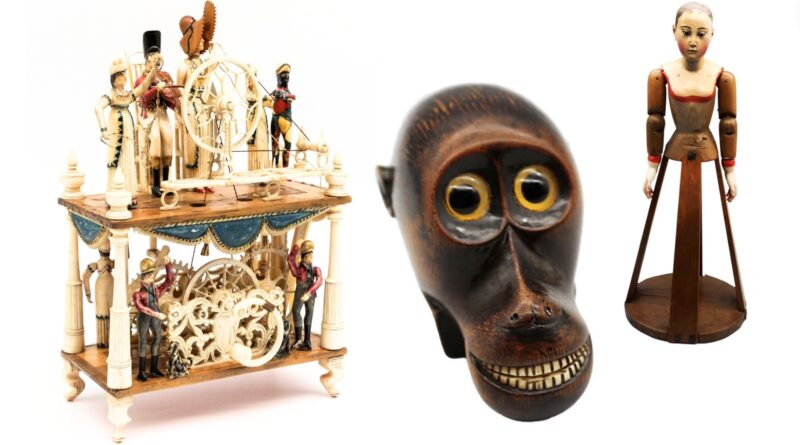Dancing ‘Spinning Jenny’ automaton could lead sale
 A rare automaton made by a French prisoner of war 200 years ago is among ‘exceptional treasures’ from one man’s lifetime collection set for auction in June.
A rare automaton made by a French prisoner of war 200 years ago is among ‘exceptional treasures’ from one man’s lifetime collection set for auction in June.
The Napoleonic nine-character ‘Spinning Jenny’ bone automaton, made in circa 1800-1810, could sell for £15,000. It’s among thousands of treasures amassed by award-winning British toy designer Patrick Rylands.

Over more than 50 years, Mr Rylands, 81, a man who created some of the UK’s best loved toys, amassed his diverse collection. He bought anything and everything that caught his eye including antique ceramics, rare tinplate toys, early Mickey Mouse collectibles, 1930s American radios and what is thought to be the best Victorian marble collection ever found in the UK.
The collection is so vast it’s had to be split into sections. Part 1, Curios and Connoisseur Ceramics, went under the hammer at Hansons Auctioneers’ Derbyshire saleroom on May 29 – and exceeded all expectations. It achieved a hammer total of more than £57,000.
Now Part 2, Curios and Works of Art, is set for auction on June 25. It includes the rare prisoner-of-war automaton. Awash with detail, its colourful array of figures include a painted harlequin waltzing with a lady and redcoat soldier. Though there is some slight damage, the mechanism is in fragile working order.

Other exceptional items coming up include a rare mid–19th century burr walnut Trinity House work/sewing box with original key, estimate £800-£1,200. It’s decorated with civilian and Royal Navy ships, maritime scenes and a vessel named Nore, the world’s first manned floating light. It was placed at the mouth of London’s River Thames in 1732 by Trinity House, a charity which has maintained UK lighthouses for hundreds of years.
Sale manager David Wilson-Turner said: “This is such a wonderful piece, historical and beautifully crafted. These wooden boxes have a long tradition of being made by Trinity House lighthouse keepers. They were sometimes sold to ships captains to raise funds for the organisation.”
Keen bidding is also expected for a scarce, large 19th-century painted wooden cage doll with articulated arms jointed to a main torso, jointed hands and detailed facial features including eyelashes, glass eyes and painted hair, estimated at £500-£700.

Another rare find is an early 20th-century mahogany rectangular shaped counter-top confectionery cabinet, advertising ‘Macfarlane Lang & Cos, Rich Cakes’, estimated at £500-£700.
Meanwhile, Mr Rylands’ eclectic tastes come to the fore in an early 19th-century carved ebonised sycamore snuff box in the form of an exaggerated monkey head, with large circular glass eyes and bone teeth, carrying an estimate of £400-£600.
Mr Wilson-Turner said: “All the antiques experts at Hansons have been mesmerised by Mr Rylands’ collection. It’s been an absolute pleasure to handle such diverse and exceptional antique treasures. For bidders, it’s a once-in-lifetime opportunity to buy items discovered over decades by a man with a deep appreciation of design. He says he just bought things he liked. As the success of his May auction shows, many other people like what he bought too.”

Patrick, who was born in Hull, East Yorkshire, but later moved to London, said: “I started collecting when I was 20 years old, probably even a little before that. I suppose I started collecting toys because I was making them for a living but my collection covers many areas. I don’t have any favourites. I liked all the things I collected – that’s why I bought them!
“My method of sourcing them was at first solely based on where to find them cheaply. That led to regular visits to London’s Portobello Road, which was close to where I lived, and early morning visits to Brick Lane markets. I built relationships with specific dealers including an American marble dealer. He used to come to my home carrying marbles in a handgun case for protection.
“The phase of my life when I was a designer and a collector is now over and I have moved into the next phase where the focus needs to be on care and comfort. Nevertheless, I have kept a handful of items so maybe I have some favourites after all.”
Mr Rylands invented interlocking construction toy Playplax, which has sold over a million copies world, when he was 23. At 27 he became the youngest designer to win the Duke of Edinburgh’s Prize for Elegant Design. After graduating in ceramics from the Royal College of Art in London in 1966 he worked as a freelance designer for iconic toy companies including Creative Playthings, Naef and Ambi Toys, where he worked exclusively as in-house designer for more than 25 years. He created more than 130 popular toddler and baby toys, known for their simplicity of design combined with movement, sound and primary colours. In 1999 he was elected the title of Royal Designer for Industry. His toys are on permanent display in London’s Victoria and Albert Museum of Childhood.

